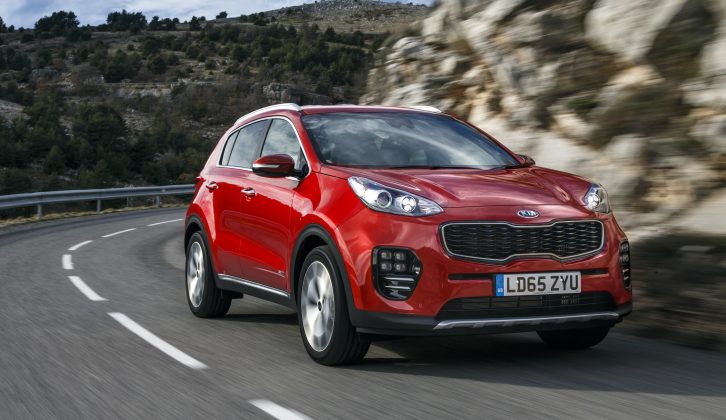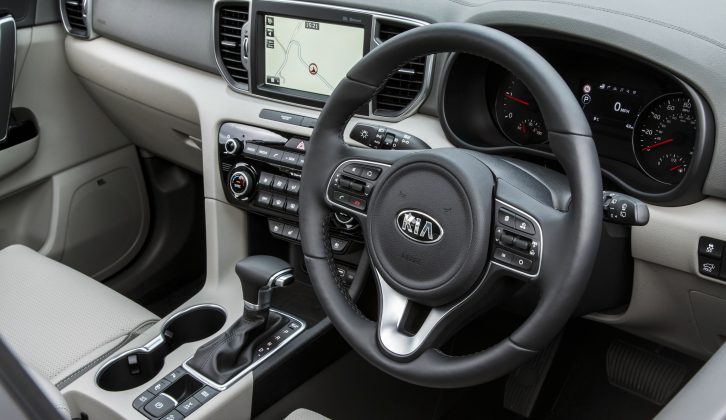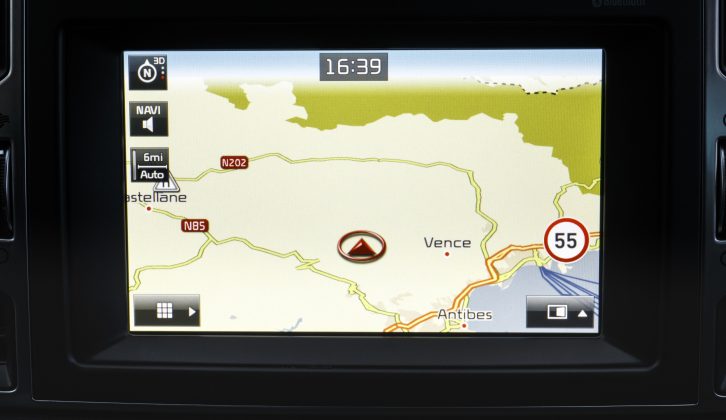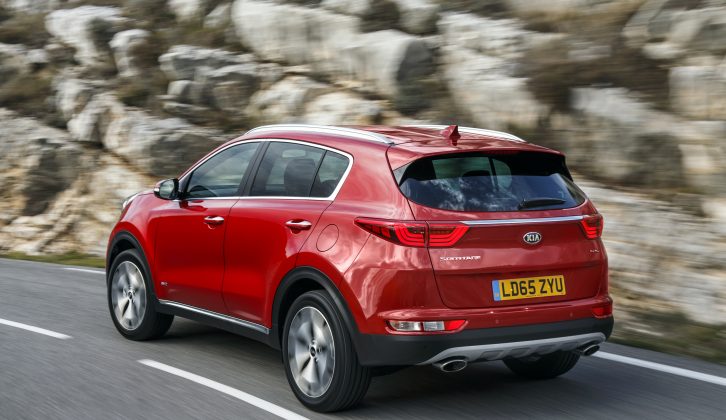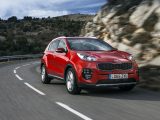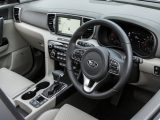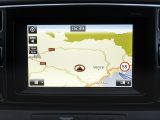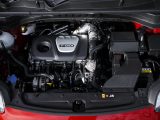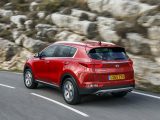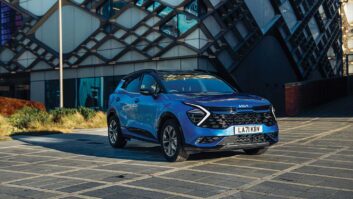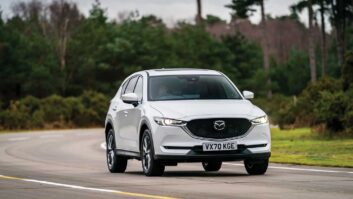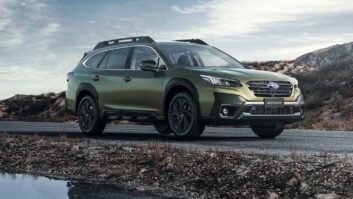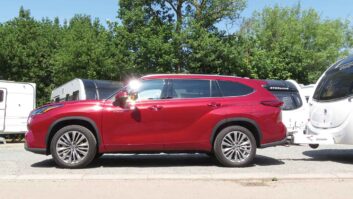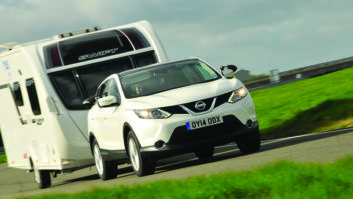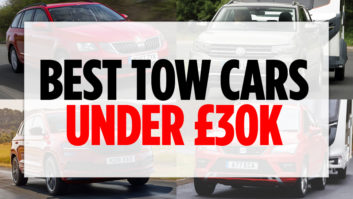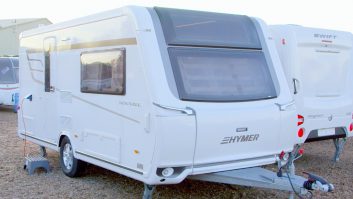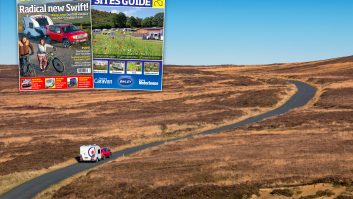As a tow car, the new Kia Sportage may live in the shadow of its big brother, the Sorento. But it’s the smaller Sportage which is the favourite with Kia’s customers, accounting for almost three out of 10 Kias sold in Britain last year.
The fourth-generation Sportage goes on sale this Friday, promising more space, greater economy, higher quality and more high-tech driver aids.
Prices start from £17,995 for the 1.6 GDi petrol, rising to £31,495 for the range-topping 2.0 CRDi First Edition automatic. Across the board the Sportage is around £500 to £1000 more expensive than the old model, but Kia argues the improved spec justifies the price. All versions except for the most basic ‘1’ spec have touchscreen satellite-navigation, for example. Driver assistance and safety technology like Speed Limit Information, Lane Keep Assist, High Beam Assist, Autonomous Emergency Braking and Blind Spot Detection are available on high-spec models. Perhaps more importantly for caravanners, Trailer Stability Assist is standard on every Sportage.
You expect a generous list of standard kit from Kia. You don’t necessarily expect a premium feel to the cabin. Kia has been making good progress in this respect, and the Sportage continues that trend. The dashboard looks similar to that in the latest Sorento, with soft-touch plastics on the top half. Lower down there’s still a hard and shiny finish, but the Sportage’s interior is definitely heading in the right direction.
The new Sportage is longer than the old car, and 30mm (just over an inch) has been added between the front and rear axles. That’s freed up more space inside, particularly in the back of the car where there is noticeably more rear legroom. I’m 6ft 3in and could sit comfortably in the back behind a driver’s seat set up for me. There are also air vents between the two front seats to keep those in the back cool in the heat and warm when it’s cold.
Boot space has also improved, although it’s still not class-leading. With the seats up, there’s a 491-litre capacity. A Mazda CX-5 has a 503-litre boot, the Honda CR-V offers 589 litres. Admittedly, the CR-V is a slightly more expensive car, but it’s not all that much pricier.
So, the Sportage is a more practical car than before. It’s also better to drive. Buyers have the choice of four different engines (one with two power outputs), of which I’ve now tried three.
There are two petrol engines: the entry-level 130bhp 1.6 GDi and a 174bhp 1.6 T-GDi (the ‘T’ stands for turbo). I took a spin in the turbocharged car. With 195lb ft of torque, there’s more pulling power than you’d expect from a petrol, and it’s delivered from just 1500rpm. It pull cleanly and all that torque means smooth progress, even from low revs, with enough brawn to make a viable alternative to diesel power. The engine is a little gruff if revved hard, but performance is lively. Kia quotes a minimum kerbweight of 1583kg for this model, plus a surprisingly high legal towing limit of 1900kg. The official combined economy figure is a slightly disappointing 37.2mpg, if you choose the six-speed manual version.
Kia expects eight out of 10 buyers to choose diesel power, with the 1.7-litre engine being most popular. It can be vocal when really put to work, but in solo driving it has enough poke for confident overtaking. As you’d expect, it’s a lot more economical than the petrol, returning 61.4mpg on the combined cycle.
The kerbweight is a modest 1500kg for this front-wheel-drive model, and the towing limit is just 1400kg. So for regular towing, one of the 2.0-litre diesels looks like a better choice. Not only are they heavier and more powerful, but they’re four-wheel drive. The 134bhp version wasn’t available to drive, but with prices starting from £24,300, on paper it’s good value. I drove the range-topping 182bhp 2.0 CRDi First Edition automatic.
The six-speed automatic gearbox changes gear smoothly, making the most of the engine’s 295lb ft of torque. Having driven this engine and gearbox combination in the mechanically similar Hyundai Tucson late last year, I know it tows very well.
I’d be surprised if the 182bhp Sportage wasn’t a stable tow car as well as a quick one. The suspension can seem a little firm around town, not helped by the 19-inch alloy wheels fitted to this high-spec model, but the Kia is well tied down on country roads and corners with poise. That kind of behaviour in solo driving usually translates into stress-free towing.
As the name implies, the First Edition cars won’t be around for ever. Kia expects to sell them until the autumn, although if demand is strong enough a similarly high-spec model could become a permanent addition to the range. With a price tag of £31,495, it’s not cheap. Step down from the First Edition to KX-4 spec and you lose Smart Parking Assist, a powered tailgate, a wireless mobile phone charger, two-tone leather trim and metallic paint. But if you can live without these, the price drops to £29,400 for the manual and £30,710 for the auto.
From launch, Kia has a number of low-rate finance deals to make the Sportage easier to afford, with the entry-level car available from £139 per month on a Personal Contract Purchase (PCP). Kia’s Care-3 package, which covers the cost of servicing for the first three years, is free of charge if you order before the end of the month.
The Kia has no shortage of tough competition – the Mazda CX-5 is more fun to drive, a Honda CR-V is more spacious. But if you’re looking for a new mid-sized crossover or SUV for towing duties on your caravan holidays, the new Kia Sportage is good enough to earn a place on your shortlist.
For regular towing, one of the 2.0-litre diesels looks a good choice – more heavy, more powerful and four-wheel drive
